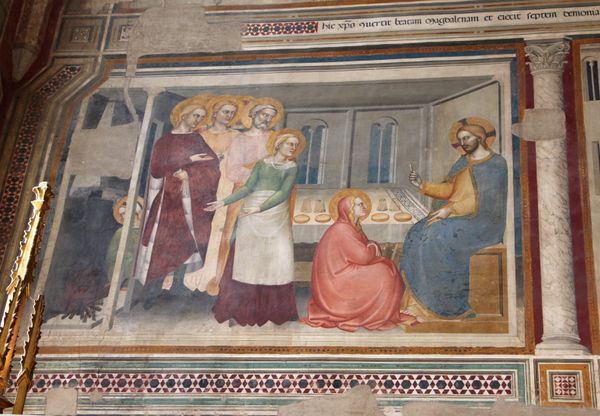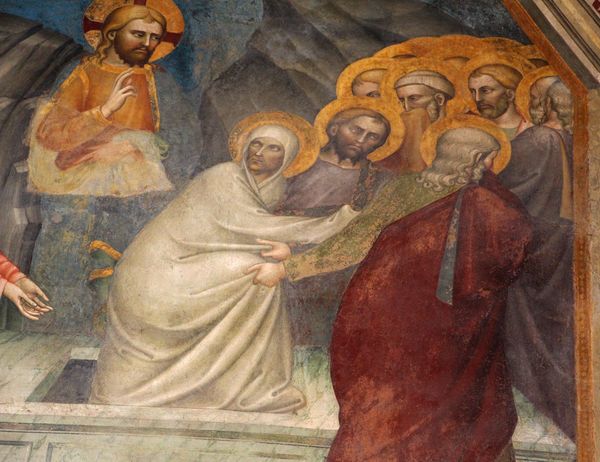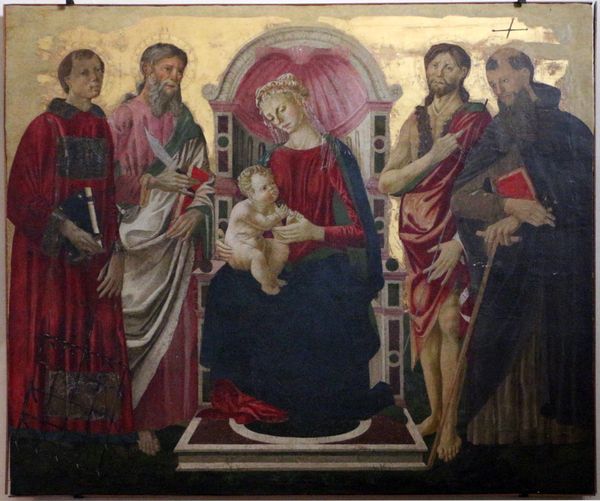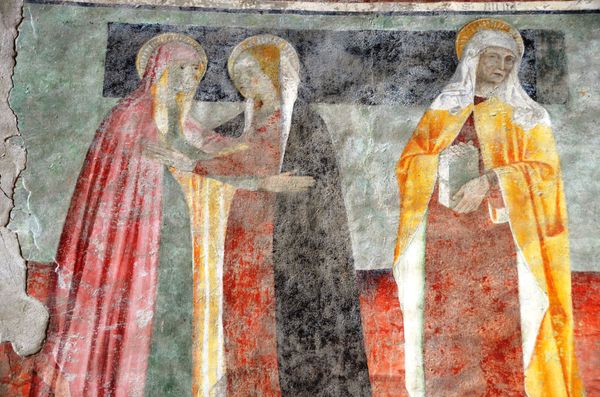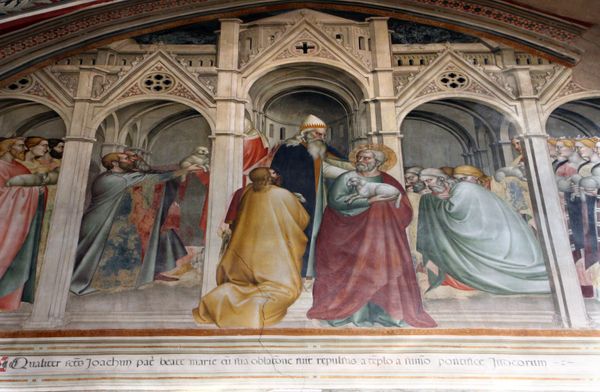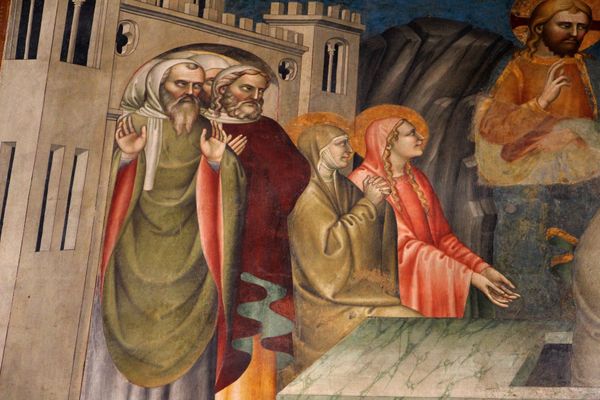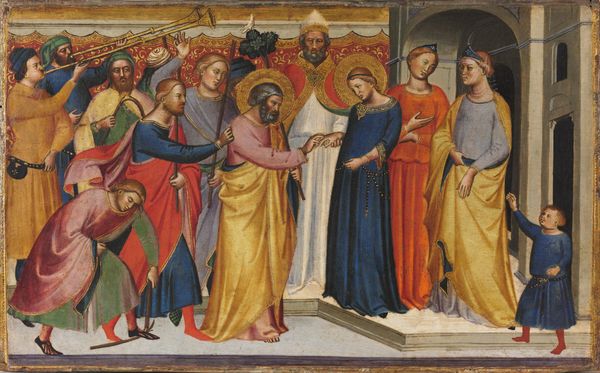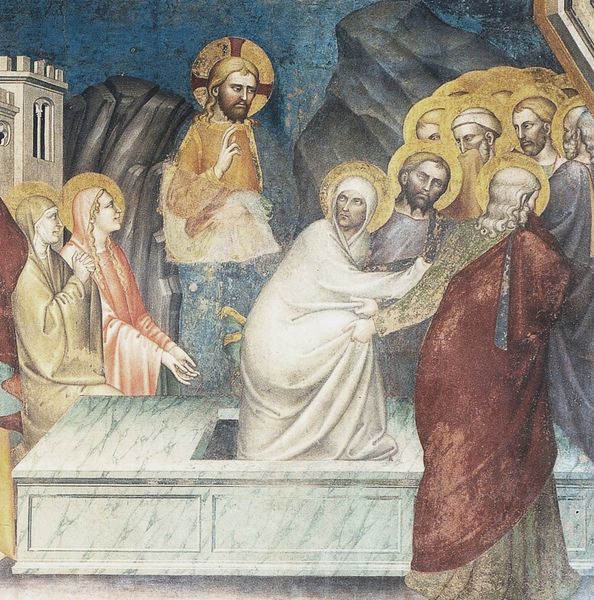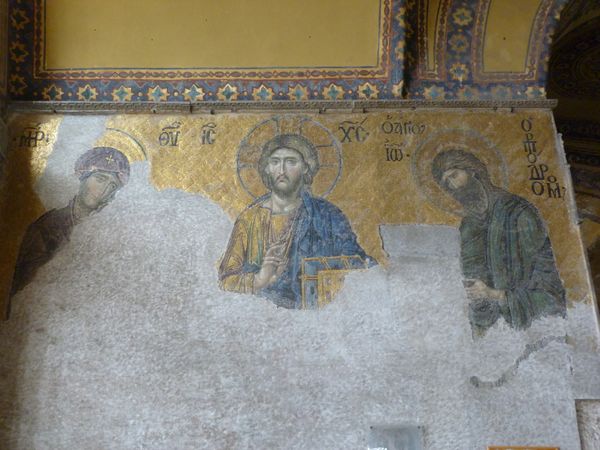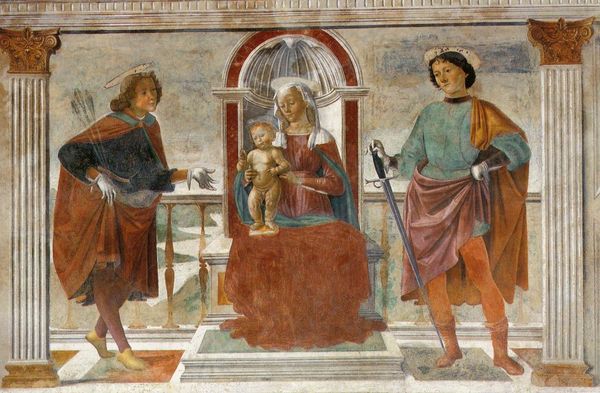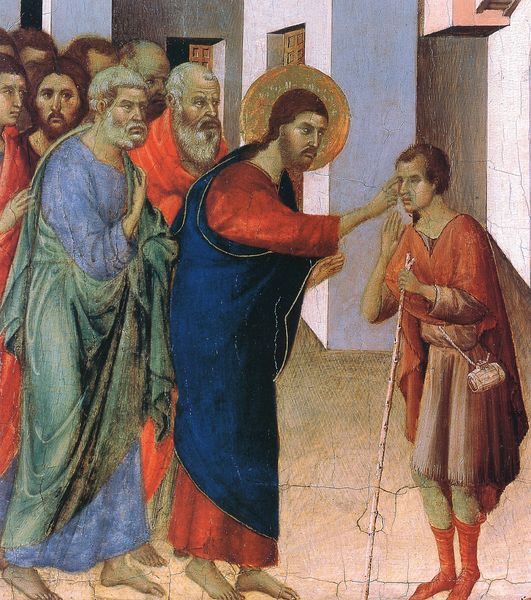
fresco
#
medieval
#
narrative-art
#
painted
#
figuration
#
fresco
#
underpainting
#
history-painting
#
italian-renaissance
Copyright: Public domain
Giovanni da Milano painted this fresco in the Rinuccini Chapel using ground pigments bound with egg tempera, applied to a prepared plaster surface. The vibrancy of colors like the red robe or the golden halos is achieved through layering translucent glazes, a labor-intensive process demanding precision. Frescos like this were not just art, but visual sermons. Every stage, from quarrying stone for the plaster to the grinding of pigment, involved skilled labor. The artist acted as a manager of a small production, coordinating all the different makers. The value wasn't just in the finished image, but in the cost of materials and labor. Consider the wall itself: it's not just a surface, but a support, made through building trades. Giovanni's artistry existed within a hierarchy of labor, each contributing to the collective purpose. Appreciating the Rinuccini Chapel means recognizing how materials, making, and social context intertwine, blurring distinctions between art, craft, and the very fabric of society.
Comments
No comments
Be the first to comment and join the conversation on the ultimate creative platform.
